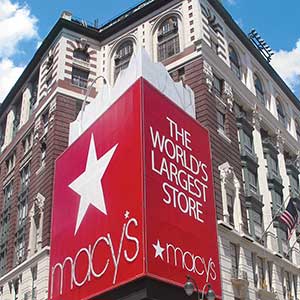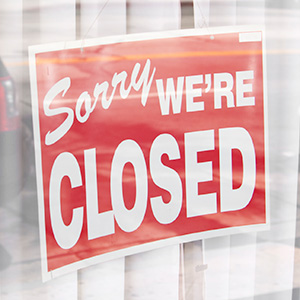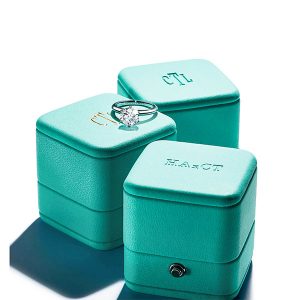
For jewelry and watch retailers, 2020 highlighted the importance of being nimble.
As the COVID-19 pandemic caused many U.S. states to mandate monthslong closures of brick-and-mortar stores, we saw retail businesses meet the “new normal” with necessary innovations: Retailers created curbside pickup services, figured out how to drop off “try-on” boxes of jewelry at client’s homes, and got busy booking Zoom and FaceTime appointments.
Small retailers were better at pivoting than big ones, unsurprisingly. And they were helped by the fact that consumers suddenly wanted to shop in small, sparsely peopled environments. As a result, the year’s biggest retail happenings pertaining to the jewelry and watch industries generally fall in line with this narrative: The big guys struggled and the little guys soared.
Here are the retail events that most affected the jewelry and watch industries this year:
COVID-19 Shuttered Retail Stores
The novel coronavirus (which had yet to be named) first spread in the U.S. on a major scale in the Seattle area in late February, but soon after it was crippling New York City and spreading into other major cities. In attempts to stem the spread of the virus, several governors, at the heeding of the Centers for Disease Control and Prevention, closed down retail stores, along with restaurants, bars, and other nonessential businesses, for months. It was an unprecedented halt to American retail, and its effects were dramatic.

U.S. Retail Sales Experienced Their Biggest-Ever Drop—But Semi-Recovered
In April 2020, retail sales fell 16.4%, setting a new record for the largest monthly drop ever in the U.S. A full recovery hasn’t yet happened, as the pandemic rages on. But come the end of May, retailers and industry watchers (including this reporter) were shocked to see just how much bounce American retail had had when the Department of Commerce reported that sales had surged 17.7% month over month, representing the largest one-month gain in history. Retail sales have been largely flat since, and big shopping days including Black Friday and Super Saturday were just okay—but the plummet and rebound were stunning.
Jewelry and Watch Sales Survived—And Even Thrived
Many affluent consumers who still had income and/or personal funds found themselves with extra bread in the bank and nowhere to spend it, since travel and experiences were out in 2020. As a result, jewelry and luxury watch sales were generally strong this year.
This statement takes into account several factors: On the highest tier, major auction houses such as Christie’s and Sotheby’s posted several record-breaking sales in 2020, most achieved in virtual auctions. Dozens of jewelers and retailers JCK editors have spoken to throughout the year say they’re having good to great sales years. And comps at mega-jewelry retailer Signet Jewelers rose 15.1% for the third quarter of fiscal 2021 ending Oct. 31.
The resilience of both categories took many by surprise. “We, like most people, thought the world was going to end, and markets were going to crash, and everything was going to sell off,” Mike Manjos, global head of trading at leading pre-owned watch seller Watchbox, told Marketplace in October. “And then demand just started growing and growing and growing.”

Congress Passed COVID Aid for Small Businesses—Twice
As millions of Americans were furloughed or laid off in the second quarter, on March 27 Congress passed the $2 trillion CARES Act that included the Paycheck Protection Program (PPP), which offered loans for small businesses specifically designed to keep workers employed. The rollout of the program was rocky, but the loans, which turned into grants if used as intended, proved popular—and successfully carried many indie retailers through the lockdowns and closures in the spring.
Passing the second stimulus bill has taken a bitterly divided Congress more time. But as of last night, it looks like it’s going forward. This bill includes funds for widespread COVID-19 testing, an expansion of unemployment benefits, $284 billion for businesses, and the return of the PPP loans.
President Trump, who had empowered his cabinet members to negotiate the package, initially refused to sign the legislation last week, calling it a “disgrace.” But The New York Times reported Sunday that he’s done an about-face and has signed the stimulus bill (but not before letting a handful of unemployment benefits lapse).

Department Stores Struggled, and a Few Faltered
In May, Nordstrom announced it would close 16 stores in a significant downsizing designed to keep the business profitable. A month later, Macy’s averted financial disaster by closing on approximately $4.5 billion in new financing.
Neiman Marcus wasn’t so fortunate. The legendary U.S. retailer sought Chapter 11 protection (also in May) in a restructuring deal that reduced around $4 billion of its debt. The Dallas-based retailer was forced to close its first-ever New York City store, at the Hudson Yards complex, which had been open a mere year.
That same month (May was a doozy), J.C. Penney filed for bankruptcy—but by November had been sold to a consortium of its landlords. Lord & Taylor filed for bankruptcy in early August in a similar bid to be acquired. But no buyer came forward, and the nearly 200-year-old department store announced later that month that it would close all 38 of its locations.
The tumult in the department store business is nothing new at this point. After Barneys New York shuttered last year, nothing’s shocking. But the continued contraction of top-tier corporate retailers such as Neiman Marcus is worrisome for fine jewelry brands and designers.

LVMH Finally Bought Tiffany
In a deal that took almost a year to complete and was full of juicy drama, French luxury conglomerate LVMH finally bought venerable American jeweler Tiffany & Co.
LVMH initially made a deal to buy the brand for $16.2 billion, but backed out in September, saying it wasn’t bound by the terms of the original deal. The reversal sparked a legal battle between the two companies. But it ended well—the second and final deal saw LVMH pay $15.8 billion for Tiffany.
“This balanced agreement with Tiffany’s board allows LVMH to work on the Tiffany acquisition with confidence and resume discussions with Tiffany’s management on the integration details,” said LVMH president and CEO Bernard Arnault in a prepared statement. “We are as convinced as ever of the formidable potential of the Tiffany brand.”
Top: Macy’s Herald Square (photo courtesy of Macy’s)
Follow Emili Vesilind on Instagram: @emilivesilind
Follow JCK on Twitter: @jckmagazine
Follow JCK on Facebook: @jckmagazine